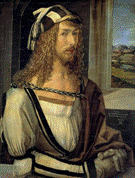Art, Art History and Design, School of

School of Art, Art History, and Design: Faculty Publications and Creative Activity
Document Type
Article
Date of this Version
1989
Abstract
Sebald Beham designed a woodcut representing a Fountain of Youth-Bathhouse that has been convincingly dated based on copies to the years ca. 1530-31, when Sebald first used the monogram HSB printed at the center of the print. This date is corroborated by the only known dated impression, which also has a text (Oxford, the Ashmolean Museum); the date 1531 and the name of the publisher, Albrecht Glockendon, are printed at the end of the text below the print (Fig. 1). The woodcut is large. It was printed onto four sheets of full-size paper and measures over one foot high by three and one-half feet wide (506 x 1095 mm). It has more the size and format of a large foldout map than that of Sebald's own postage stamp-sized engravings.
Beham's print is unique in its juxtaposition of the subjects of the fountain of youth and bathhouse. In the left half of Sebald's woodcut, old men and women, clothed and naked, arrive at the fountain of youth by stretcher and on crutches. Once in the fountain, the bathers--who are mostly male--are transformed into young musclemen who scale the fountain. They are also transformed into amorous bathers in the right part of the fountain basin and in the Bathhouse half of the composition. In the latter, lovers embrace at far right and lounge together in bed at upper center. A variety of bath utensils are strewn about before the bath basin, and a group of spectators on the roof drinks, converses, and provides music. Because Beham's print depicts both the fountain of youth and the bathhouse, which have two distinct pictorial traditions, each subject will be treated individually here.


Comments
Published in Register of the Spencer Art Museum, vol. VI, no. 6 (1989 [issued summer 1990]), pp. 64–88.